Sushi Vinegar vs Rice Vinegar | What’s the Difference? Let’s Have a Look
Are you a fan of authentic Japanese cooking? Then you’ll know that vinegar is a popular cooking ingredient that’s often used in Japanese cuisine!
The type of vinegar used can alter the taste of the food in a subtle way that gives meals a unique and unmistakable character.
Two popular types of vinegar used in Japanese cooking are sushi vinegar and rice vinegar.
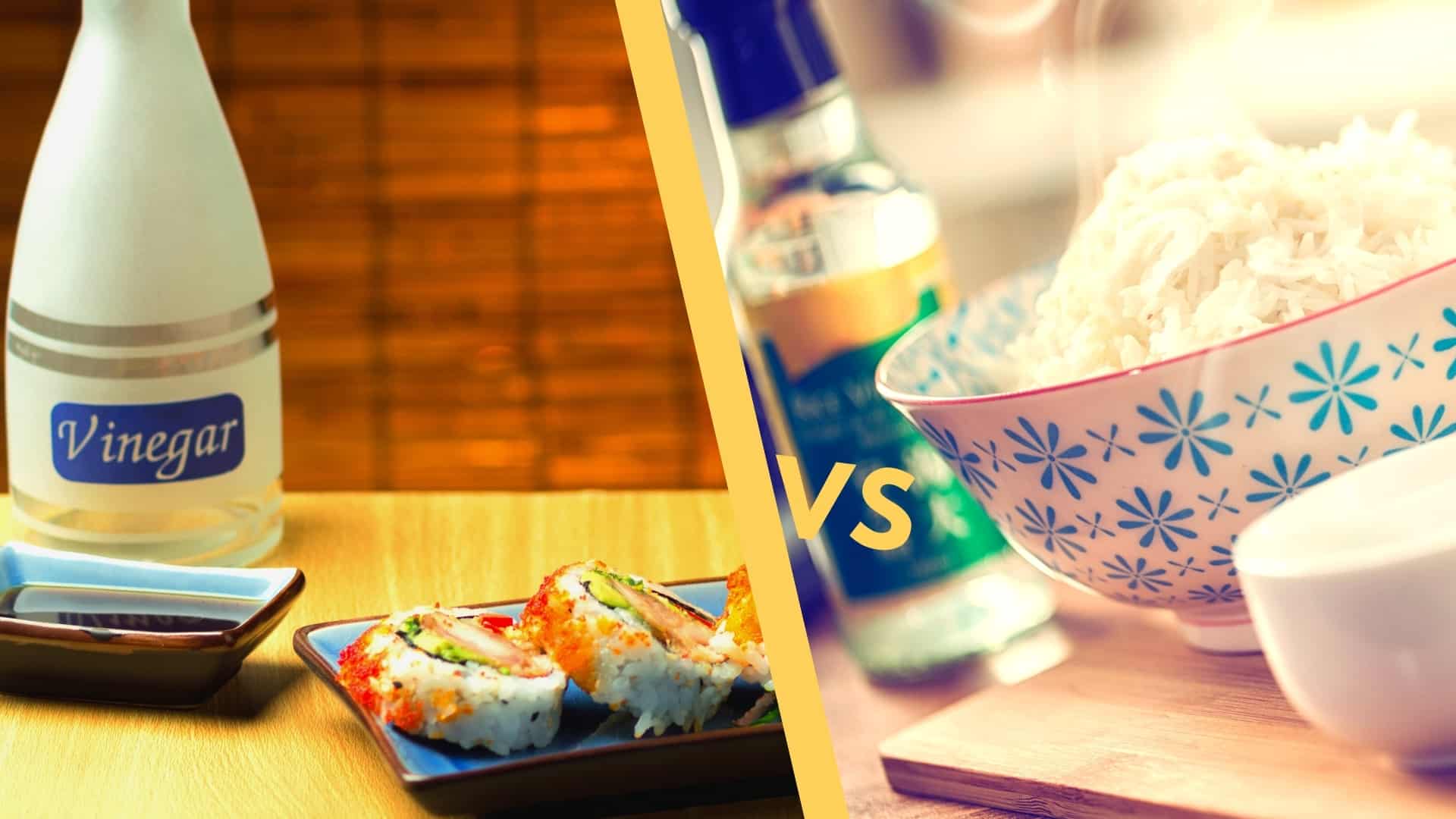
What’s the difference between the two?
The rice version is made from fermented rice.
It might surprise you that sushi vinegar is actually the same as the rice type. It has added sugar, salt, and often, other seasonings to give it a stronger, sweeter flavor. That way, it’s ready to be used in sushi rice!
This article will take a look at sushi and rice vinegar so you can decide which is right for your dishes.

Check out our new cookbook
Bitemybun's family recipes with complete meal planner and recipe guide.
Try it out for free with Kindle Unlimited:
Read for freeIn this post we'll cover:
What is rice vinegar?
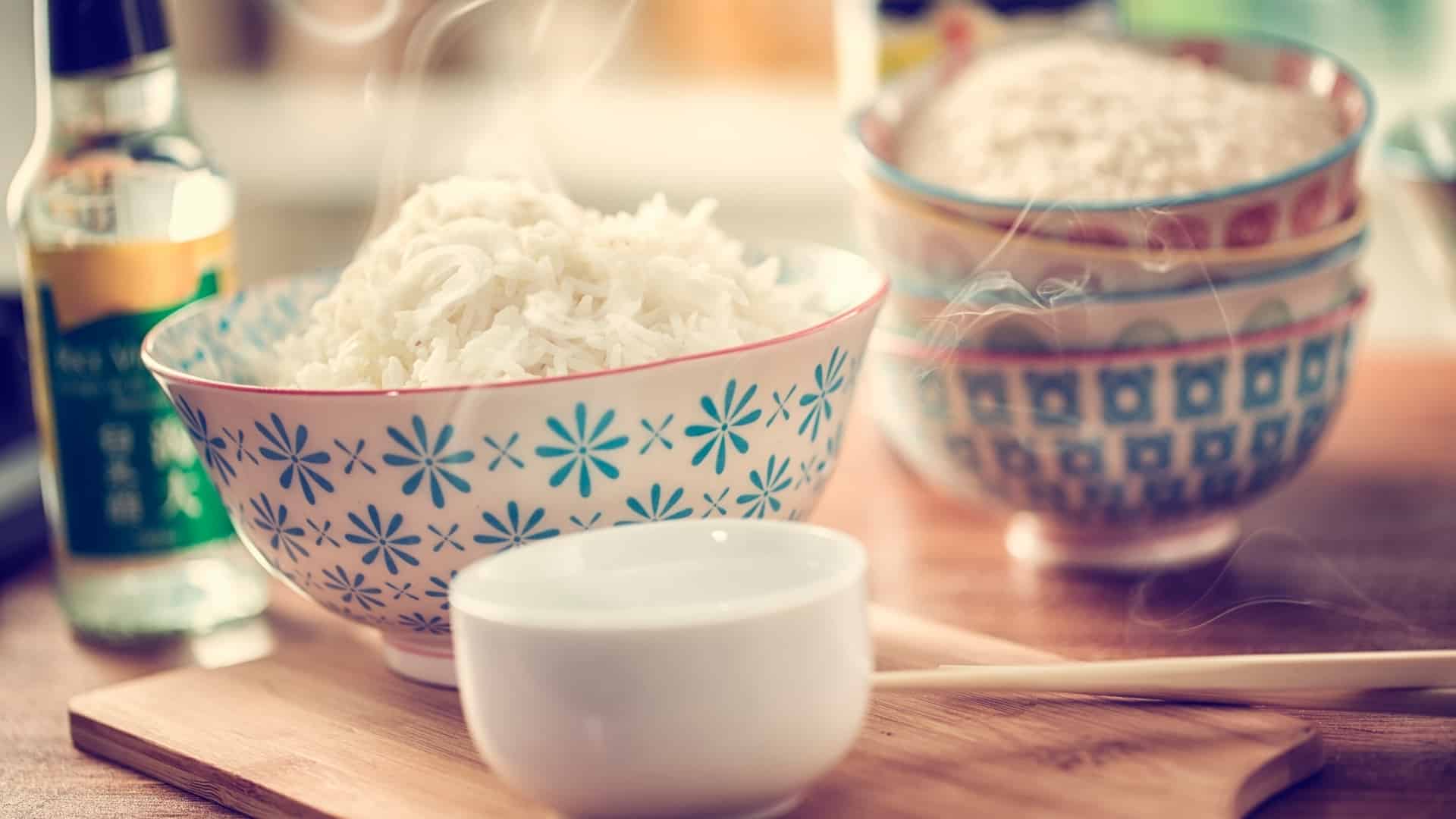
While rice ferments naturally, vinegar is not the end product.
Instead, you have to go through a specific process to make vinegar from rice.
These are the steps you will need to take:
- Cook rice, then submerge it in water and let it sit, covered, for about 4 hours.
- Strain the mixture so only the water is left. Put water in a bowl and let it refrigerate overnight.
- Add ¾ cup of sugar for every cup of rice water. Allow granules to dissolve.
- Cook rice water for 20 minutes and leave to cool.
- Add yeast at ¼ tbsp for every cup of the mixture. Mix well.
- Allow to ferment in a sealed container for up to a week.
In Japan, you’ll often see these large fermenting rice fields:
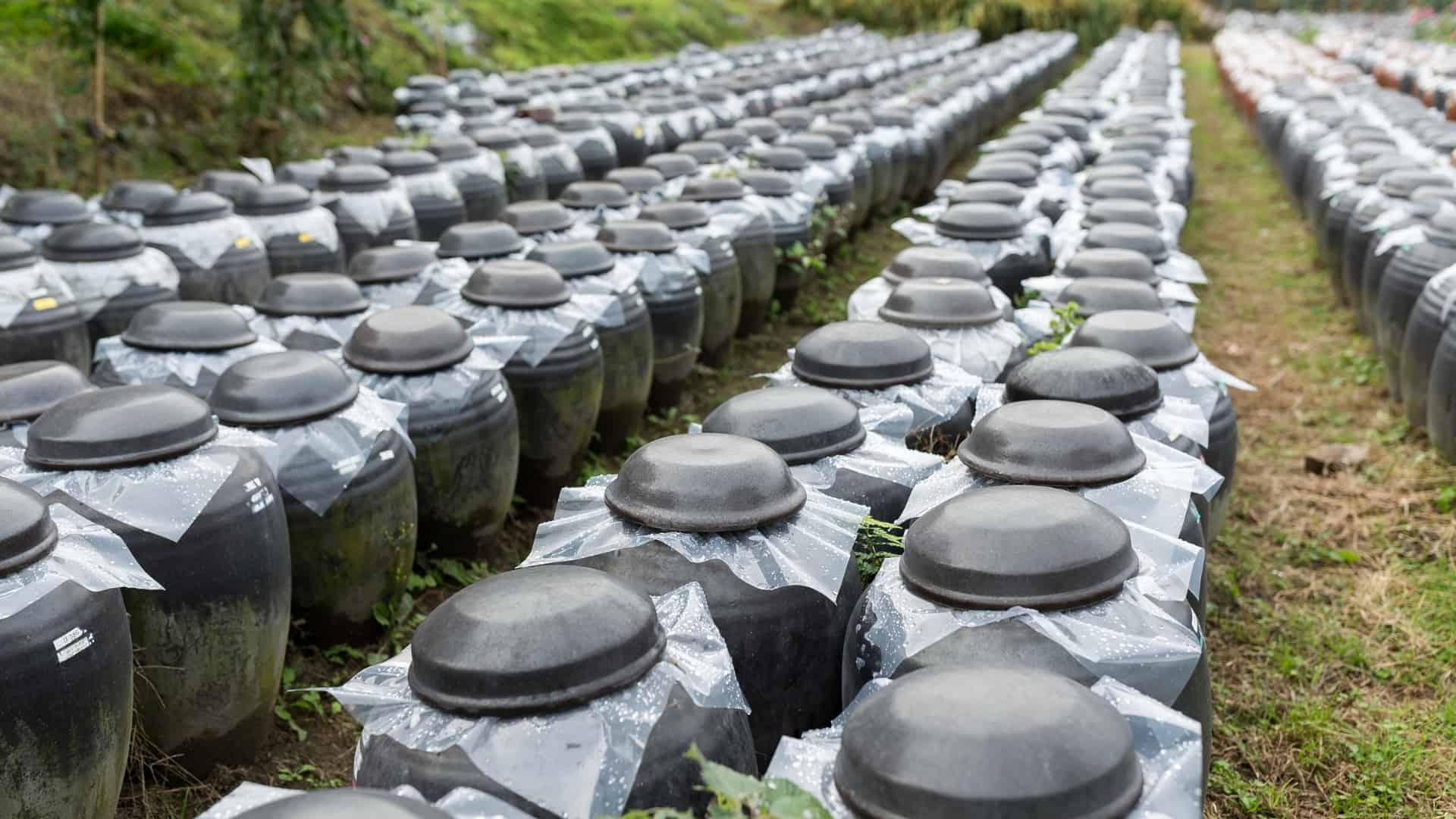
As opposed to regular vinegar, the rice type has a more delicate and mild flavor that can even be described as sweet.
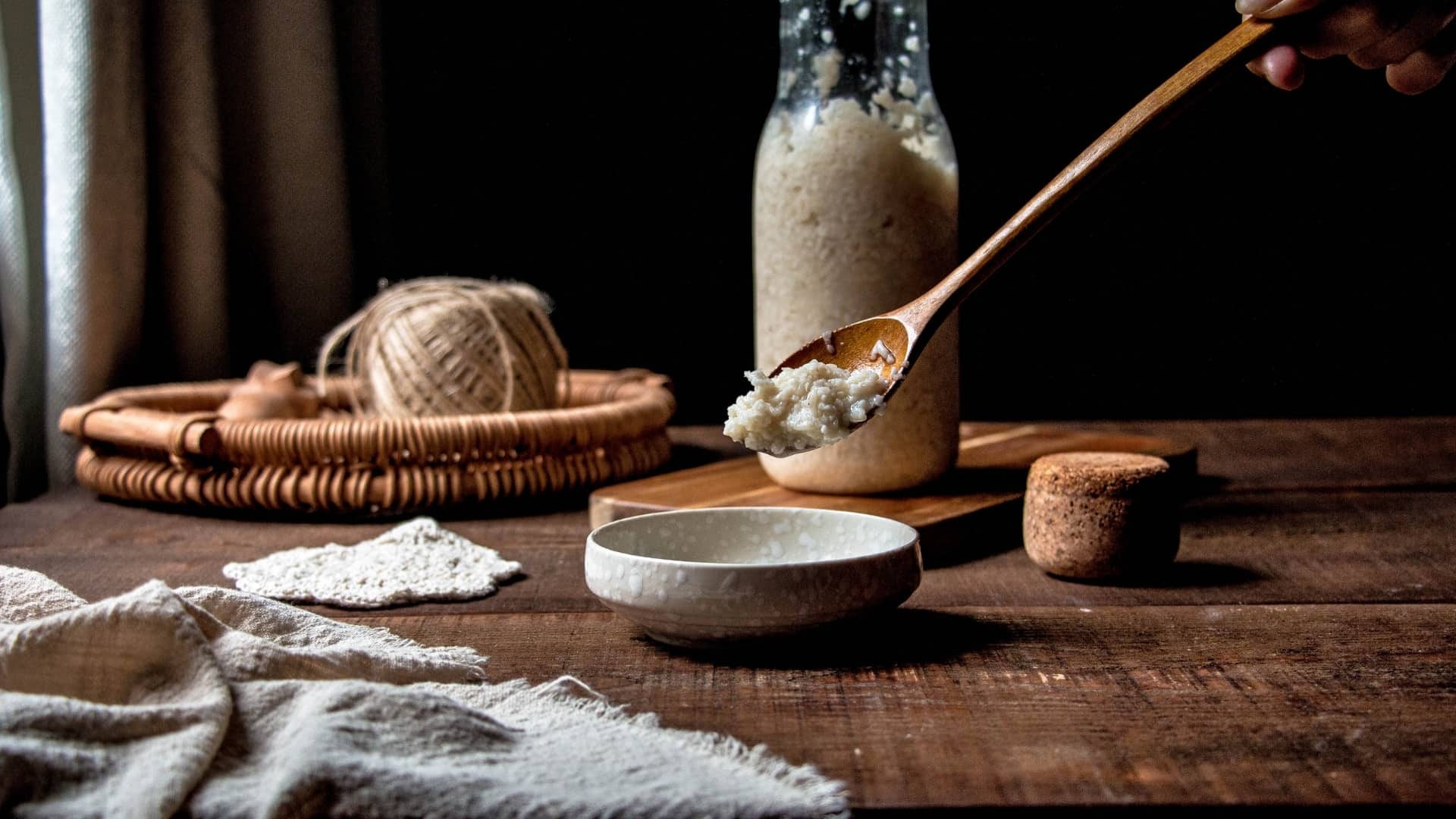
It’s used in many Asian dishes, including salad dressings, dips, pickled vegetables, and of course, for making sushi rice!
This vinegar is a key ingredient in tare sauce. Read all about tare sauce and all the wonderful things you can do with it.
What is sushi vinegar?
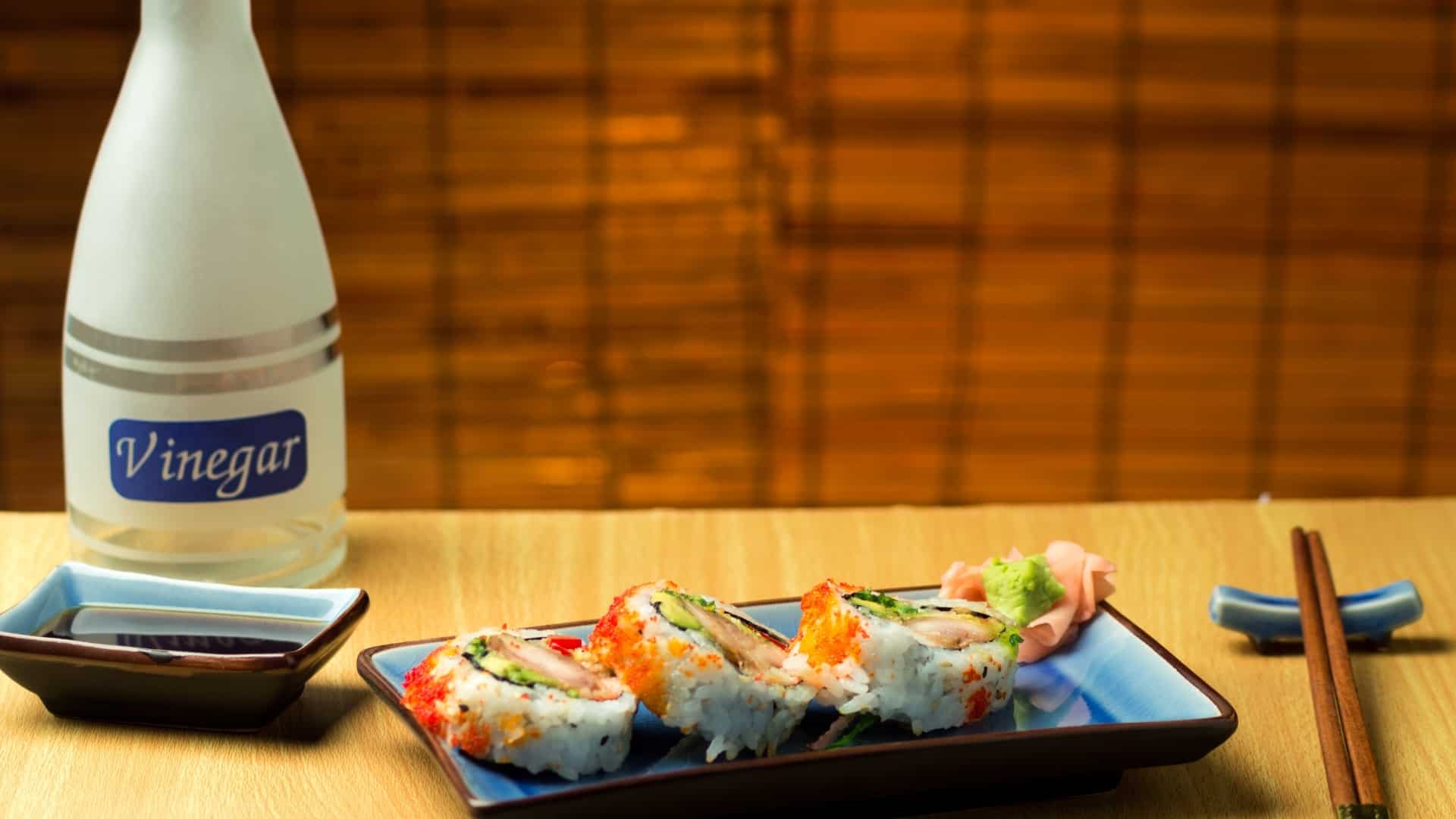
Sushi vinegar is made of one or more rice-based liquids.
Typically, rice vinegar (or a substitute like these) is the base. Cider vinegar can also be used, but the rice version has a more subtle taste that allows for more seasoning flavor to come through.
Salt is always added to rice vinegar. Sometimes, sugar is added as well, but more often, a sweet rice wine like mirin is used instead.
Sake, another type of rice wine, can be added as well. Kelp is another optional ingredient.
The mixture of ingredients is heated and allowed to simmer, but not boil. In the simmering process, the liquid is stirred often and is reduced so that the alcohol dissipates.
Once done simmering, the vinegar is removed from heat and left to cool.
It’s best if it’s left to sit for a couple of days before use.
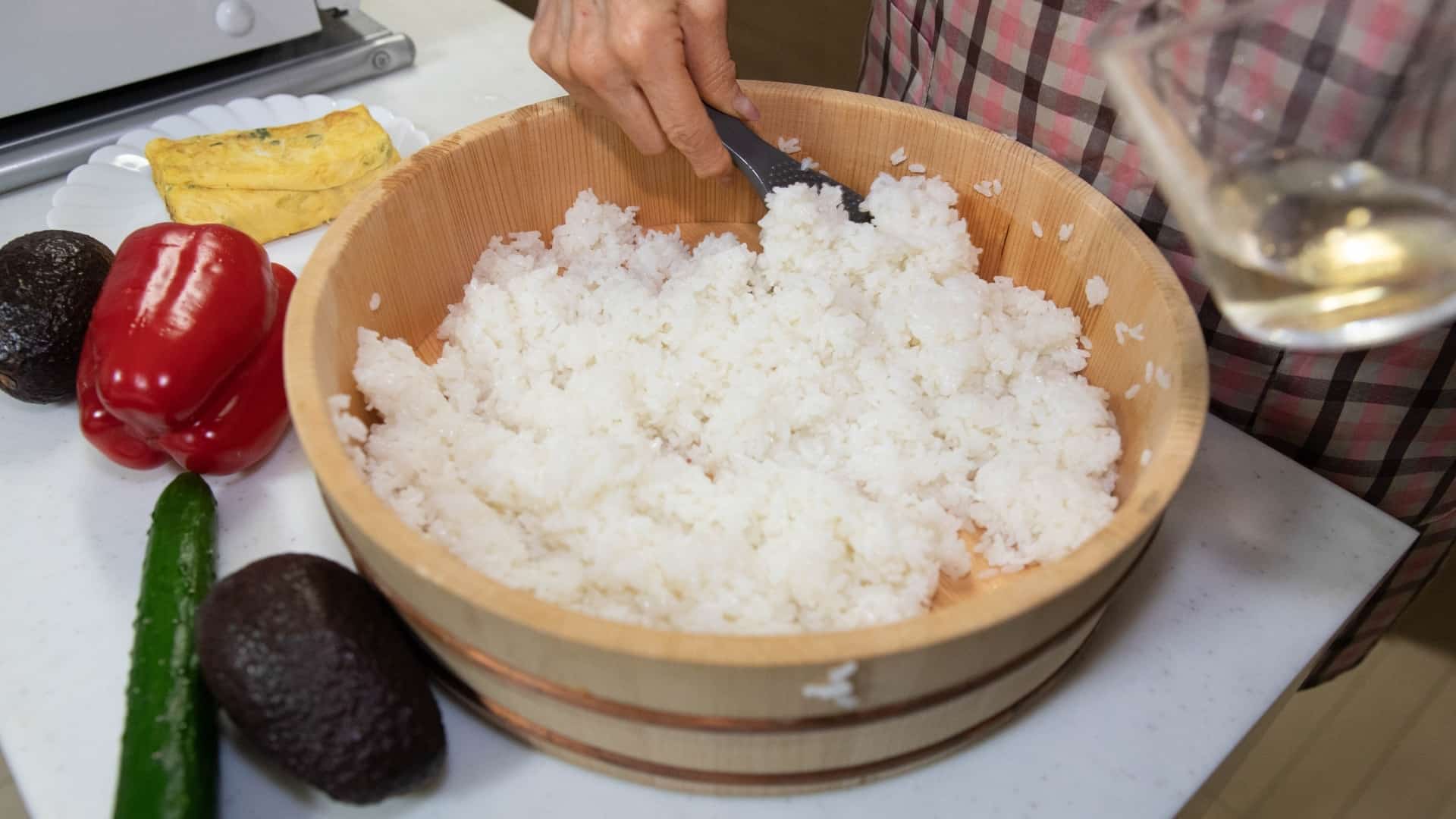
Like rice vinegar, this type of vinegar also has a mild flavor but the sugar content gives it a sweeter taste.
It’s commonly used in sushi and as a dressing for sushi rice. But it can work as a substitute for rice vinegar in a variety of dishes.
Read more on Sushi vinegar, including a homemade recipe + 3 best store-bought vinegars.
What type of vinegar do you use for sushi rice?
Technically, both are used for sushi rice. But as the name suggests, sushi vinegar is used for making sushi rice.
So this means that you’d use sushi vinegar to make your favorite sushi dishes!
Can you use normal vinegar for sushi rice?
Yes, you can use normal vinegar for sushi rice. However, it’ll have more of a bite to its taste.
So you should only resort to normal vinegar if you’ve run out of the sushi version!
Is sushi vinegar the same as mirin?
As I’ve explained above, this vinegar is made from the rice version, with some extra ingredients.
Mirin, on the other hand, is a sweet rice wine that tastes a bit sour.
These are 2 distinct ingredients, which means they are not the same.
Rice vinegar brands
While you can make rice vinegar at home, it’s a lot simpler to buy it from a store.
Here are some brands that I recommended:
- Marukan: This brewed product has a depth that makes it ideal for a wide variety of dishes. It’s brewed slowly and naturally, and made with the finest ingredients. It’s great for stir-fries, marinades, salads, pickling, and more.
- Natural Earth: This product has a delicate sweet flavor. It’s great for softening the taste of dishes that typically require vinegar. The product is organic, kosher, non-GMO, vegan, and gluten-free.
- 365 Everyday Value: This product is brought to you by the people at Whole Foods. It’s a high-quality vinegar that’s naturally sodium-free and fat-free. It’s kosher and organic.
Sushi vinegar brands
Then, here are some of my favorite sushi vinegar brands:
- Mizkan: Mizkan vinegar is flavored with salt and sugar. It’s great for sushi and rice.
- Nishiki KC: This item is imported from Japan and 100% natural. It’s great for sushi.
- Marukan: This vinegar has a sweet taste and is made from high-quality ingredients. It’s kosher, non-GMO, and gluten-free.
Sushi rice vs. rice vinegar: nutrition
Vinegar is very healthy to eat. It’s fat-free and calorie-free, and because it’s a fermented food, it’s excellent for digestion and immunity.
White rice is a food that’s high in carbs and has had most of its fiber stripped away. So it doesn’t have much nutritional value.
If you’re going to eat rice, then it’s best to opt for black or brown varieties, as these are higher in nutritional content.
How to make brown rice sushi: try this great & healthy recipe!
Also, if you want to be healthier when making sushi, you can try to fill it up with more wholesome ingredients and cut down on the sushi rice.
Enhance your cooked rice
The next time you want to make sushi rice, you now know the difference between these 2 types of Japanese vinegar. While they’re almost the same things, there are subtle differences that make each unique.
So whether you’re making sushi, pickled vegetables, or salad dressing, pick the right type of vinegar for the best results!
Check out our new cookbook
Bitemybun's family recipes with complete meal planner and recipe guide.
Try it out for free with Kindle Unlimited:
Read for freeJoost Nusselder, the founder of Bite My Bun is a content marketer, dad and loves trying out new food with Japanese food at the heart of his passion, and together with his team he's been creating in-depth blog articles since 2016 to help loyal readers with recipes and cooking tips.
